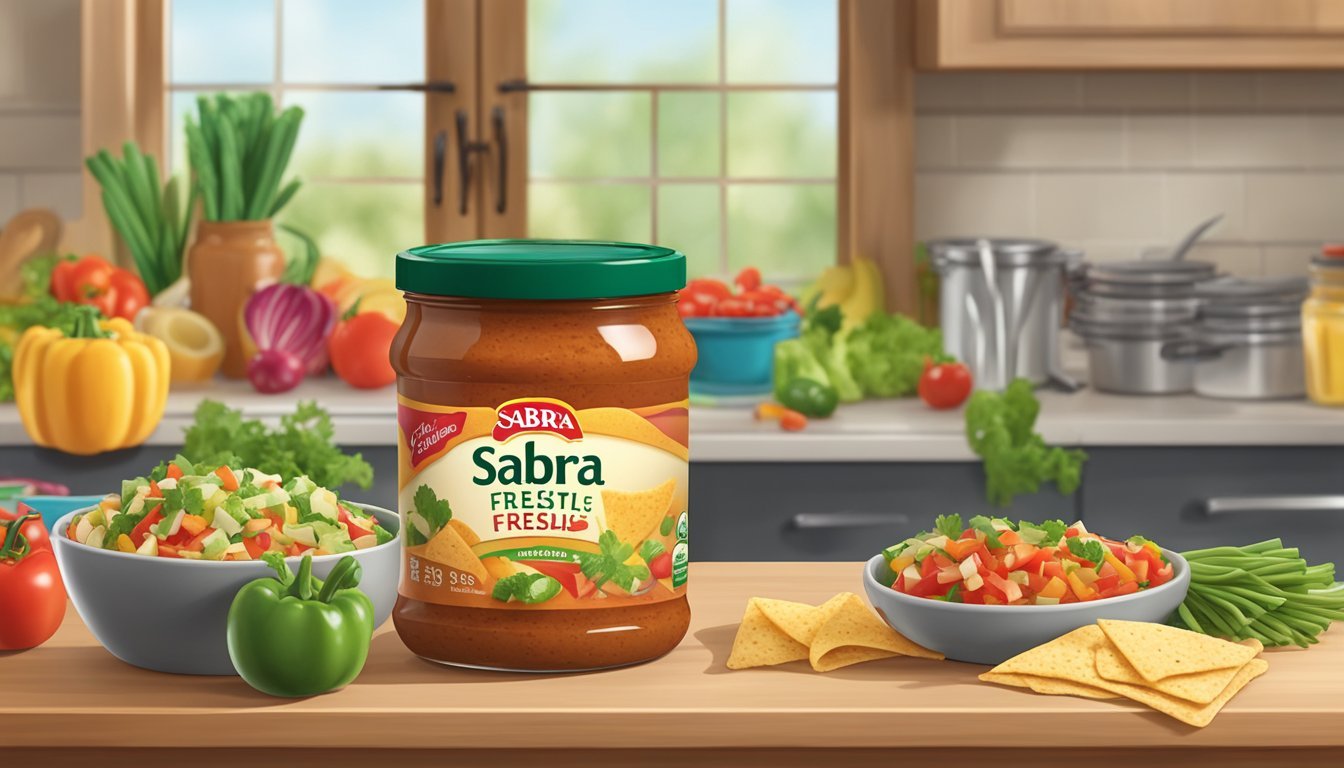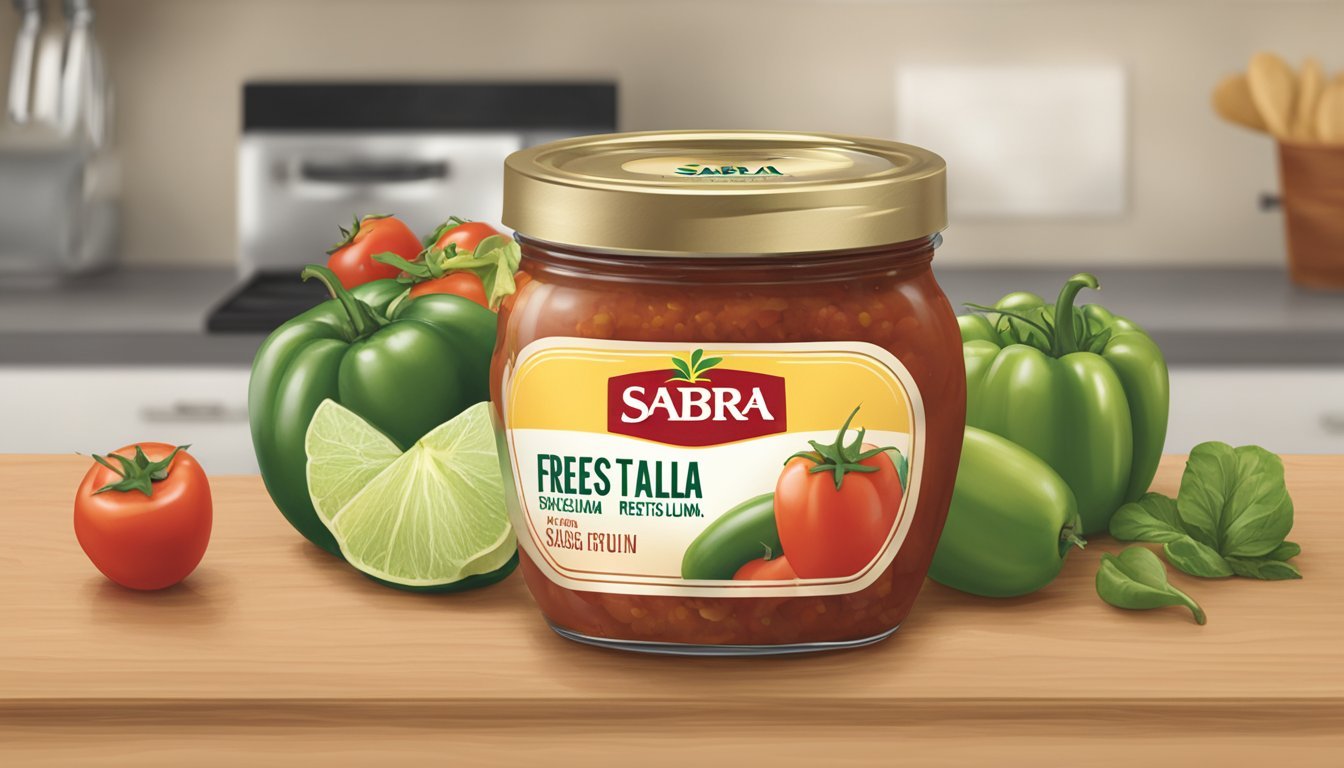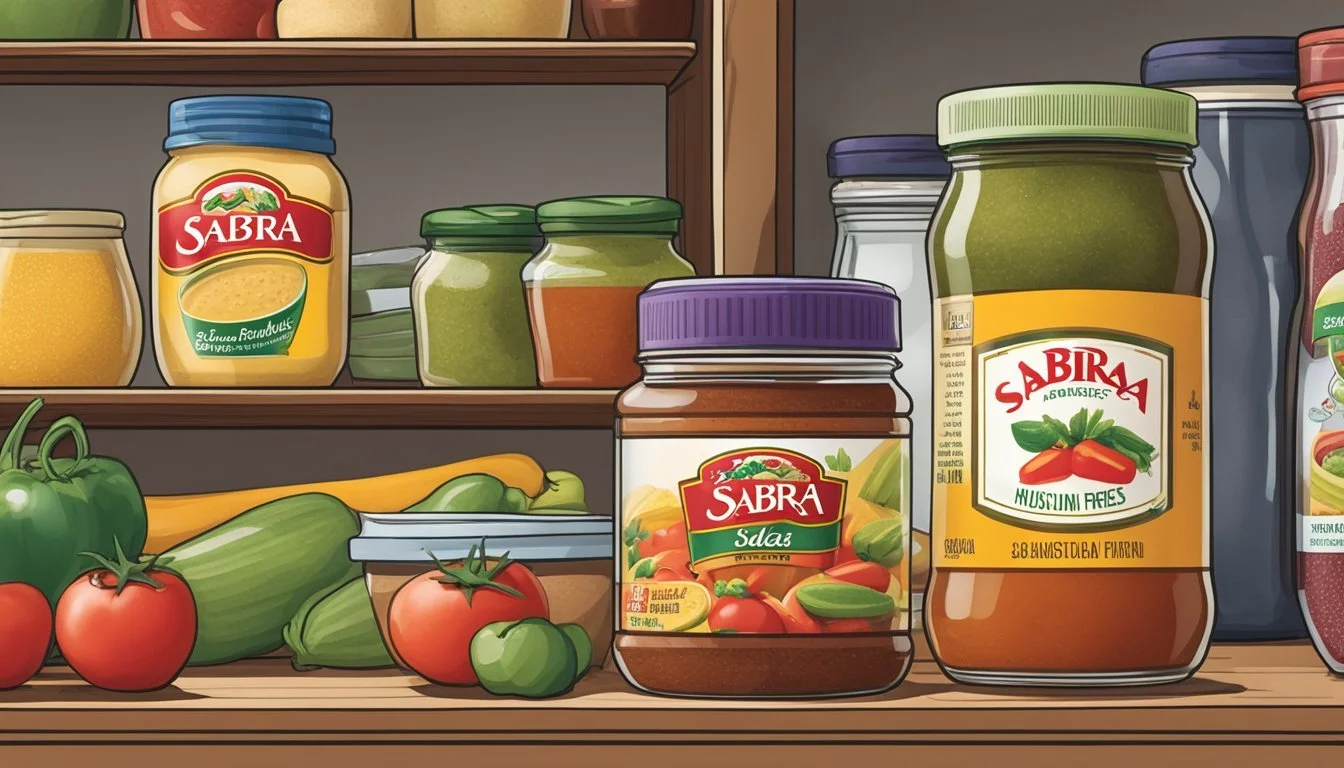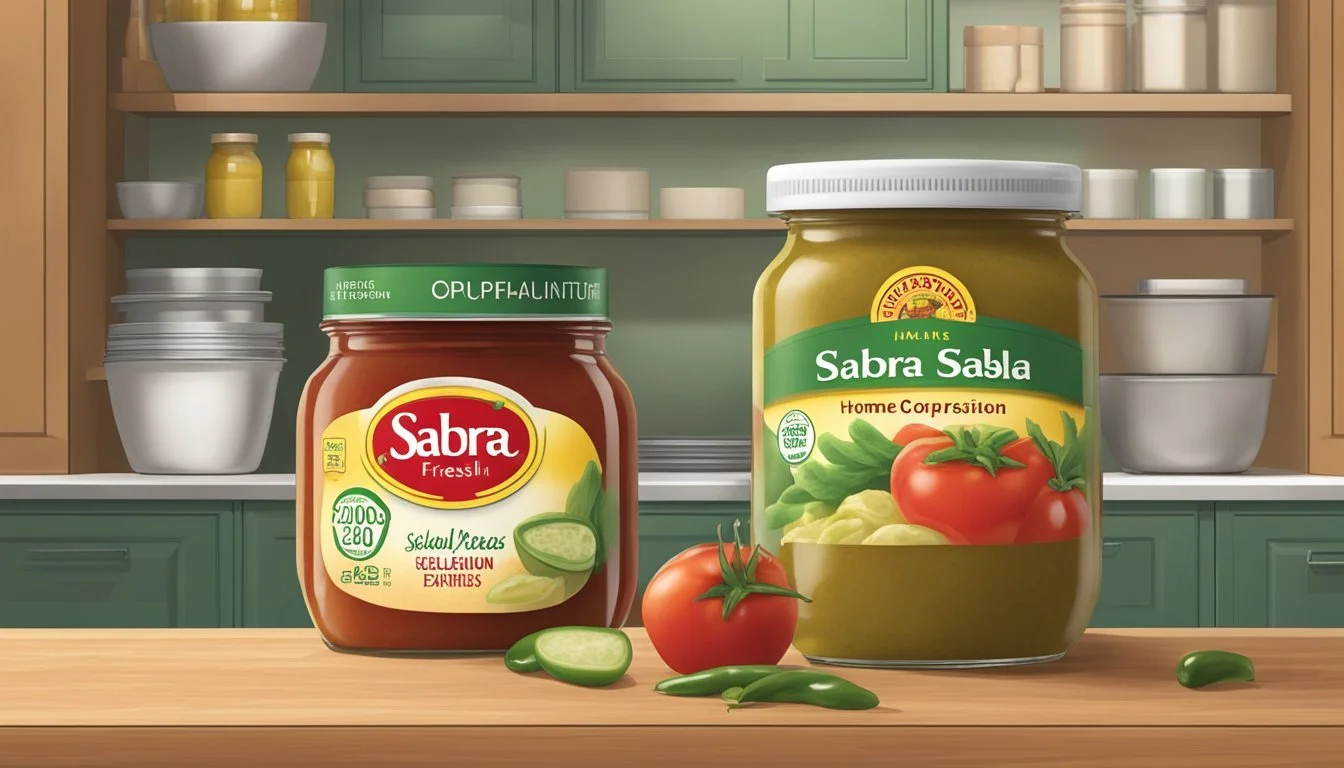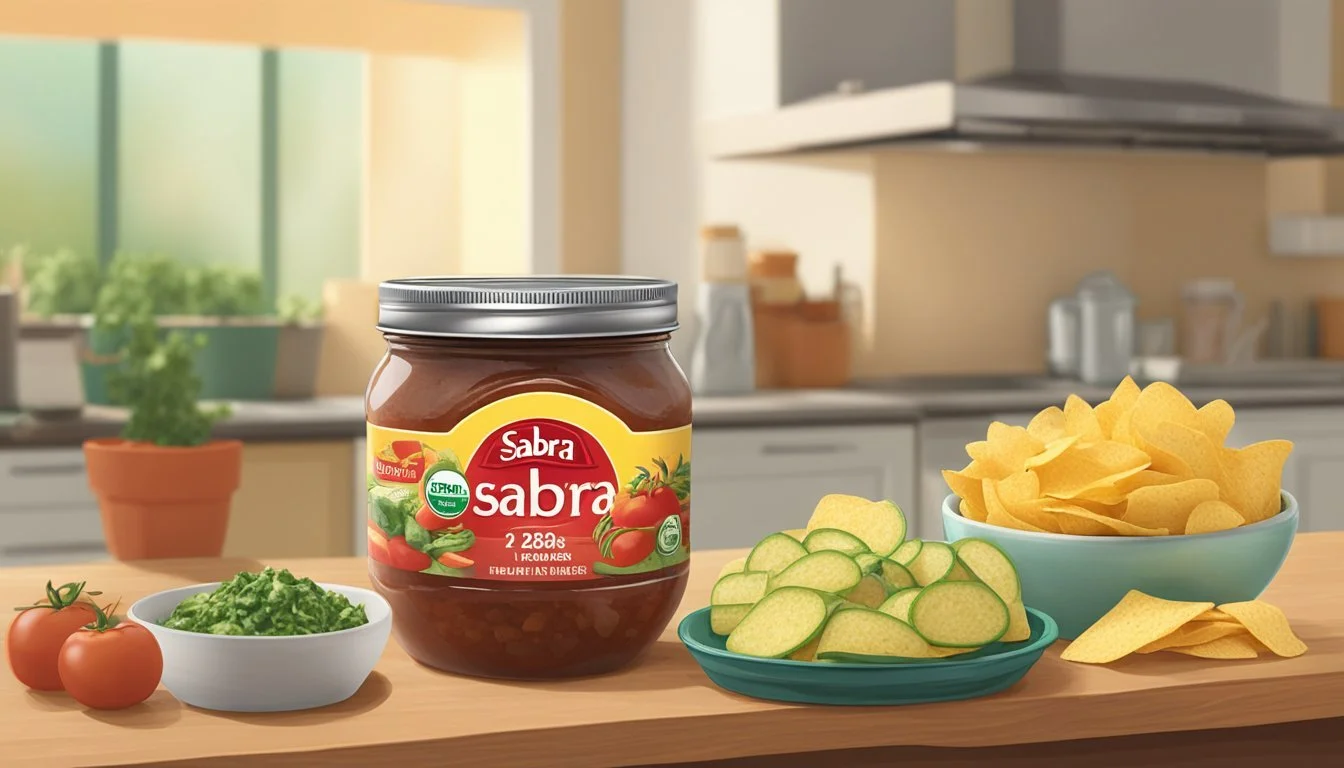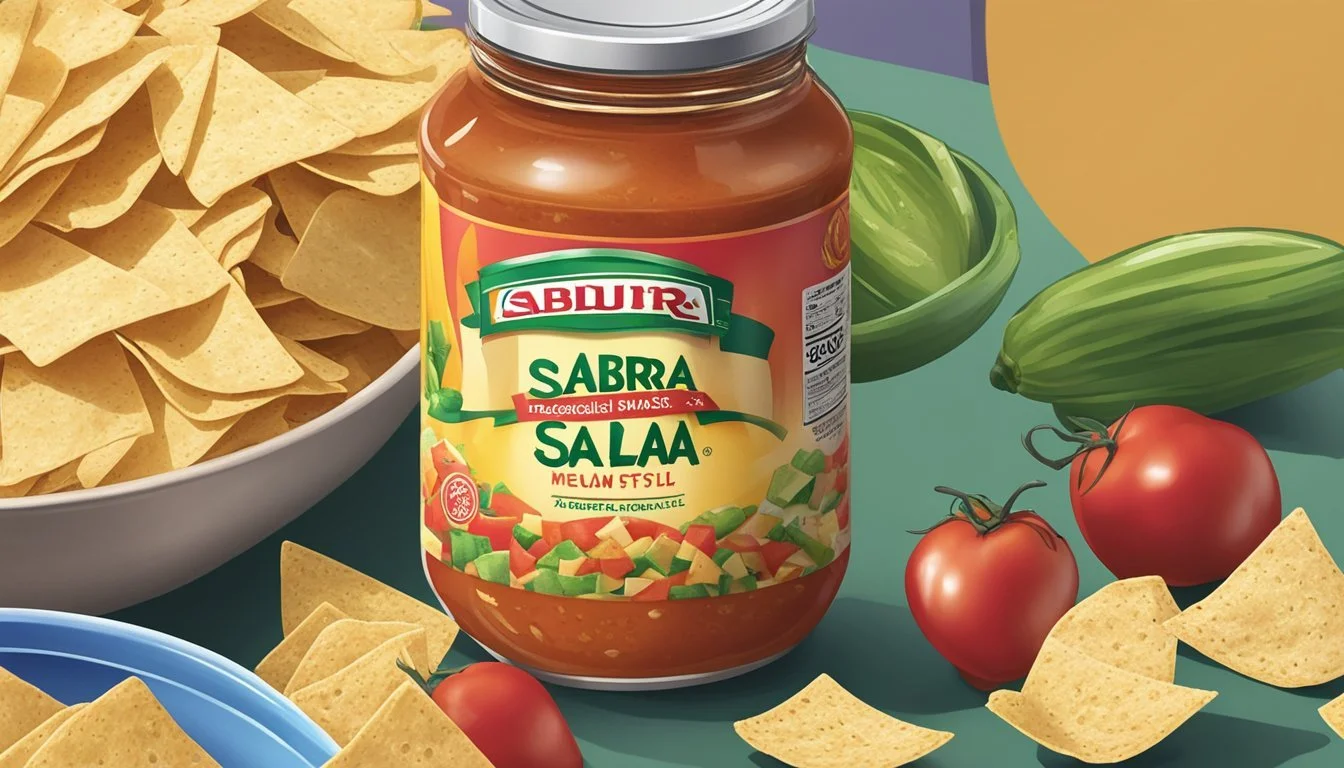How Long Does Sabra Fresh Salsa Homestyle Medium Last?
Shelf Life and Storage Tips
When considering the shelf life of Sabra Fresh Salsa Homestyle Medium, it's crucial to note that the storage method plays a significant role in its longevity. Typically, a container of Sabra Fresh Salsa Homestyle Medium, like most fresh salsas, will last until the printed expiration date when unopened and properly refrigerated. Once opened, it is best consumed within 5 to 7 days to ensure its freshness and quality.
The presence of preservatives in store-bought salsa, even those labeled as fresh, often extends its shelf life compared to homemade versions. However, indicators such as changes in color, texture, or odor can signal that the salsa is no longer suitable to eat, regardless of the best-by date or days passed since opening. Users should consistently rely on both visual inspection and the provided use-by date to determine the salsa's edibility.
Careful preservation methods, like keeping the salsa refrigerated at a constant temperature and ensuring the lid is tightly sealed after each use, are essential to maintaining its quality and safety for consumption. These practices can help maximize the salsa’s shelf life while keeping the flavors as intended.
Understanding Salsa
Salsa, a versatile and widely-loved condiment, comes in many variations and can have different shelf lives depending on its components and preservation methods. This section explores the essentials of salsa, focusing on its ingredients, the different types available, and how best to preserve its freshness.
Components of Salsa
Salsa is traditionally a combination of tomatoes, onions, cilantro, lime juice, and chilies. Some variations might include garlic, vinegar, salt, and sometimes sugar. The balance of these ingredients contributes to the flavor and shelf-life of the salsa. When making fresh homemade salsa or purchasing store-bought salsa, it's essential to consider the freshness and quality of these ingredients, as they affect both taste and longevity.
Types of Salsa
Salsas can be categorized mainly into fresh salsa, homemade salsa, and store-bought salsa, which includes jarred salsa and refrigerated salsa. Fresh and homemade salsas generally lack preservatives, making them shorter-lived than commercial jarred salsas, which often contain preserving agents.
Fresh Salsa: Typically lacks preservatives, vibrant in color and flavor, should be consumed quickly.
Homemade Salsa: Shelf life varies based on ingredients and preservative measures; similar to fresh salsa in taste.
Store-Bought Salsa: Longer shelf life due to preservatives; convenient but may vary in freshness.
Preservation Techniques
Proper storage is key to extending the shelf life of salsa. Airtight containers play a significant role in preserving salsa's quality by minimizing exposure to air:
Refrigeration: Most salsas should be kept refrigerated to slow bacterial growth.
Freezing: An effective method to extend the shelf life of salsa up to 6 months.
Preservatives: Commercial salsas often contain vinegar or citric acid to prolong shelf life.
When keeping salsa fresh, temperature regulation and minimizing exposure to air are vital strategies. Whether homemade or store-bought, keeping salsa sealed and chilled is the best practice for maintaining its flavor and safety for consumption.
Storage Fundamentals
Effective storage methods are essential to maximize the shelf life and maintain the quality of Sabra Fresh Salsa Homestyle Medium. These practices ensure that the salsa retains its intended flavor, texture, and color.
Proper Storage Locations
Fridge: The refrigerator is the primary storage location for Sabra Fresh Salsa Homestyle Medium after opening. It should be stored in an airtight container to prevent exposure to air, which can affect the salsa's quality. Placement in the fridge should avoid areas with fluctuating temperatures, such as the door.
Storing Unopened Salsa: An unopened container of Sabra Fresh Salsa can be kept in the pantry or kitchen cabinet at room temperature until the printed expiration date.
Post-Opening Storage: Once opened, transfer the salsa to the refrigerator immediately.
Impact of Storage Conditions
Temperature: Maintaining a consistent cool temperature in the refrigerator, ideally below 40°F (4°C), is crucial for preserving salsa.
Optimal Fridge Temperature: Below 40°F (4°C)
Container: An airtight container protects the salsa from contaminants and moisture, both of which can degrade the product's quality. The container should be sealed tightly after each use.
Preferred Containers: Glass or plastic with a secure lid
Duration: Depending on the specific ingredients and preservatives, Sabra Fresh Salsa Homestyle Medium typically has a shorter shelf life than processed salsas. After opening, consumption within 5 to 7 days is advised for the best quality experience. With optimal storage conditions, the salsa should maintain its:
Texture: Smooth yet chunky, without water separation
Color: Bright and vibrant, consistent with fresh ingredients
Odor: Fresh and aromatic, free of any sour or off smells
Maintaining the storage fundamentals is key to enjoying Sabra Fresh Salsa Homestyle Medium in its best form.
Shelf Life and Expiration
The shelf life of Sabra Fresh Salsa Homestyle Medium is an essential aspect for consumers to consider ensuring both safety and enjoyment of the product. Two main factors dominate its longevity: expiration date and storage conditions.
Identifying Expiration
Sabra Fresh Salsa Homestyle Medium is typically marked with a best by date, which indicates the last date Sabra recommends for use to assure peak quality. This date is not an expiration date; the salsa can still be consumable after this point but may not hold the best flavor or texture. Once opened, the salsa's shelf life lessens considerably, and consumers should inspect the salsa for signs of spoilage before consumption.
Factors Affecting Shelf Life
Several factors influence the shelf life of Sabra Fresh Salsa Homestyle Medium:
Preservatives: The salsa may contain preservatives that help to extend its shelf life.
Acidity: The acidic ingredients, like tomatoes and certain preservatives in the salsa, can act as natural preservatives.
Ingredients: The variety and freshness of ingredients can affect longevity; fresher ingredients can mean a shorter shelf life.
Storage Conditions: How one chooses to store salsa is critical. Unopened salsa should be kept in a cool, dry place, and refrigerated immediately upon opening. Proper storage can significantly extend a salsa's usable life after it's been opened.
By knowing the best by date and understanding how storage and ingredient factors affect the salsa, consumers can best ensure they enjoy the product while it's fresh.
Signs of Spoilage
When assessing Sabra Fresh Salsa Homestyle Medium for spoilage, it is important to consider sensory changes and potential health concerns that come with consuming compromised salsa.
Sensory Indicators of Spoilage
He or she can often identify spoilage in salsa through sensory evaluation. These indicators include:
Smell: Fresh salsa should carry a vibrant, tangy odor indicative of fresh ingredients. If the salsa emits a sour or unpleasant smell, it indicates bacterial growth and spoilage.
Color: Salsa should maintain its vibrant red and green hues from tomatoes and peppers. Discoloration or a dull appearance often suggests spoilage.
Texture: If the salsa's texture has become excessively watery or if there are signs of mold—which appears as fuzzy green, white, or black spots—these are clear indicators the product has gone bad.
Taste: It's not recommended to taste salsa if it shows signs of spoilage, but an off taste is a definitive indicator that salsa should not be consumed.
Health Concerns With Spoiled Salsa
Consuming spoiled salsa poses significant safety risks due to bacteria and potential foodborne illness:
Foodborne illness: Bacteria like salmonella or E. coli can develop in spoiled foods, including salsa. This could result in symptoms like nausea, vomiting, and diarrhea.
Safety: It is critical to avoid consuming salsa if there are any signs of spoilage to prevent foodborne illnesses. Even if salsa appears safe to consume, if it has been stored beyond its expiration or recommended storage period, it should be discarded.
Extending Shelf Life
Proper refrigeration and freezing techniques are critical for extending the shelf life of Sabra Fresh Salsa Homestyle Medium. These methods can significantly delay spoilage and maintain the salsa's quality for later consumption.
Refrigeration Practices
To extend the lifespan of refrigerated salsa, one must adhere to optimal refrigeration practices. Sabra Fresh Salsa Homestyle Medium should be stored in the refrigerator at a constant temperature of 40°F (4°C) or below. Upon opening, it is vital to ensure the salsa container is sealed tightly after each use to avoid exposure to air, which can accelerate spoilage.
Do's:
Store promptly after opening.
Keep the salsa in its original container with a secure lid.
Don'ts:
Leave the salsa out at room temperature for more than two hours.
Use salsa that shows signs of spoilage, such as an off odor or mold.
Freezing Techniques
Freezing is a practical approach to preserve leftover salsa for an extended period. Freeze Sabra Fresh Salsa Homestyle Medium by transferring it to an airtight, freezer-safe container or bag. This method can maintain its quality for up to 2 months. It's crucial to label the container with the date of freezing.
Steps for Freezing:
Pour the salsa into the container, leaving an inch of headspace to allow for expansion.
Seal the container tightly and label it with the current date.
Upon Defrosting:
Thaw the frozen salsa in the refrigerator overnight.
Stir well before serving, as separation may occur.
Note: Frequent thawing and refreezing should be avoided as they can degrade the quality of the salsa.
Utilizing Leftover Salsa
When that jar of Sabra Fresh Salsa Homestyle Medium nears its end, there's no need to waste. Leftover salsa can be repurposed in cooking, serving as a flavorful condiment or integrated into recipes to enhance a variety of dishes.
Recipe Integration
Leftover salsa can easily be transformed into a key ingredient for numerous recipes. For instance:
As a Marinade: Leftover medium salsa can add a spicy kick to chicken or beef. Simply use it as a marinade before grilling or roasting to infuse the meat with its rich flavors.
Salsa Soup Base: Blend leftover salsa with tomatoes or broth to create a zesty soup base. This can serve as the foundation for chicken tortilla soup or a bean chili.
Creative Applications
Beyond traditional uses, leftover salsa can take on new life in innovative ways:
Stirred into Rice: Enhance cooked rice (how long does cooked rice last?) by stirring in salsa for an easy side dish with a flavor boost.
Omelet Filling: Mix salsa into omelets or scrambled eggs for breakfast with a twist. The medium heat of the salsa pairs well with the mild flavor of eggs.
Homemade Dressing: Whisk salsa with oil and vinegar to form a tangy salad dressing or drizzle.
Savory Topping: Top a baked potato with salsa and a sprinkle of cheese for a simple yet satisfying meal.
Conclusion
Sabra Fresh Salsa Homestyle Medium is subject to similar storage guidelines as other fresh salsas. Generally, unopened and properly refrigerated, it should maintain its quality for about two weeks. Once opened, consumers should ideally enjoy it within 4-7 days. To maximize freshness and safety, it should be stored in the refrigerator immediately after use.
Key Points:
Upon opening, consume within 4-7 days.
Keep refrigerated at all times.
The
expiration dateon packaging provides the best guide for freshness.Signs of spoilage include an off odor, discoloration, or mold growth.
For extended shelf life:
Do not leave salsa at room temperature for more than two hours.
Consider freezing if long-term storage is needed, although txture changes may occur.
It's crucial to always check for any spoilage signs before consumption. If the salsa appears to have an off smell or visible mold, it should be discarded regardless of its storage duration.

